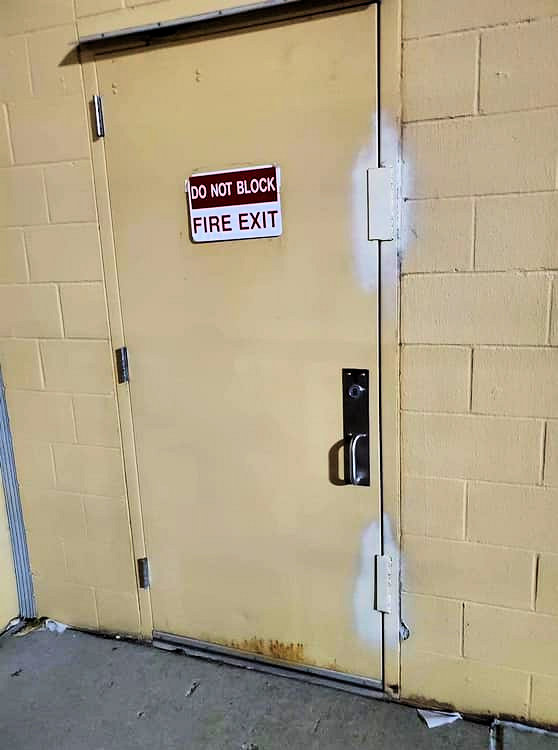Vince Davis posted this Wordless Wednesday photo on the Fire and Life Safety Inspectors Facebook group, and I asked him if I could share it here. I hope whoever thought this was a good solution for preventing unauthorized egress also thought about checking with the AHJ. Maybe there are alternate exits with the routes clearly marked. Maybe not.
You need to login or register to bookmark/favorite this content.






Professional work painted the raw steel
Maybe it’s actually Elmer’s White School Glue and a gentle tug will break it free.
(And, according to some of the kids where I went to elementary school, you can eat it )
Just can’t understand how someone can obviously see the “DO NOT BLOCK” sign and then weld on plates to block the door.
Terrifying. Attempted depraved indifference homicide?
Let’s be optimistic first and assume that the door is no longer a required exit. In that case the interior exit sign should be removed, the exit device should be removed from the door and a new sign should be attached to the inside face of the door stating, “NOTICE – THIS DOOR HAS BEEN PERMANENTLY DEACTIVATED AND CANNOT BE OPENED!
We don’t know for sure without a visit to the physical location and proper inquiry with the local AHJ, so now, let’s be pessimistic. Let’s assume that the door is still a required exit and that this modification was an unknown and unapproved “owner solution” to theft. If that’s the case, then this is not only criminal, it’s about as stupid as you can get! If I saw this modification on a business that I frequented, I would somehow get to the inside of that door to see what was going on and then, if it is indeed a violation of code, I would report it to the Department of Labor & Industry as well as the local AHJ.
I can’t tell you how many times I have pushed on the inactive leaf of (mostly) aluminum storefront entrance doors and the flush bolts are not retracted. I simply retract them and leave, but if an employee of the establishment sees me and comes over to ask me what I am doing, I tell them that it is a code violation to have this leaf locked in place during occupancy. They nod their heads and I’ll bet that the next day, it’s right back to leaving the inactive leaf locked in place.
Having gotten AHJ approval to bury and seal a door before*, that’s still the wrong way to go about it. The way I can see this being OK is it’s on an active construction site that does not need it for egress, and this is in preparation for the door and frame being removed, or for site security to later be reinstated when the door is repainted.
*”historic” exterior couldn’t be modified, but door was no longer required or useful. We’d have preferred to demo and infill (and had original brick to tooth in), but AHJ needed the exterior to remain an HM panel and frame sans hardware, with a huge sign explaining that it wasn’t a door for the fire dept.